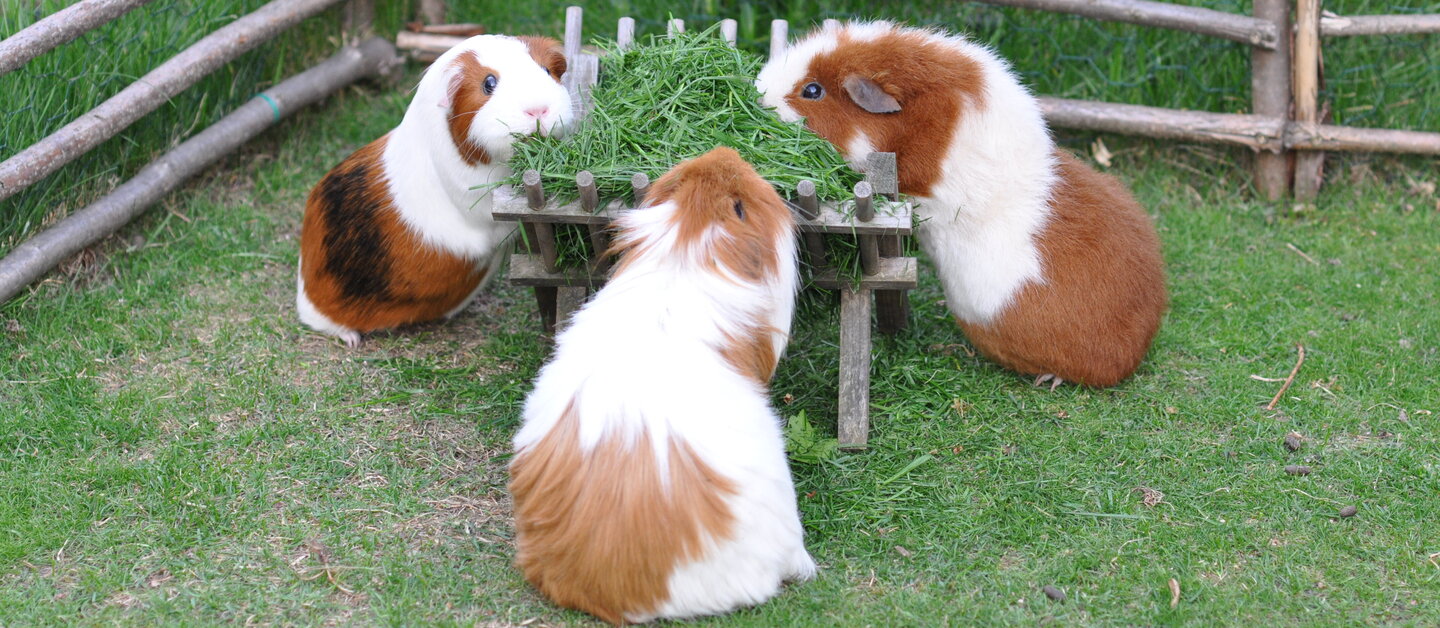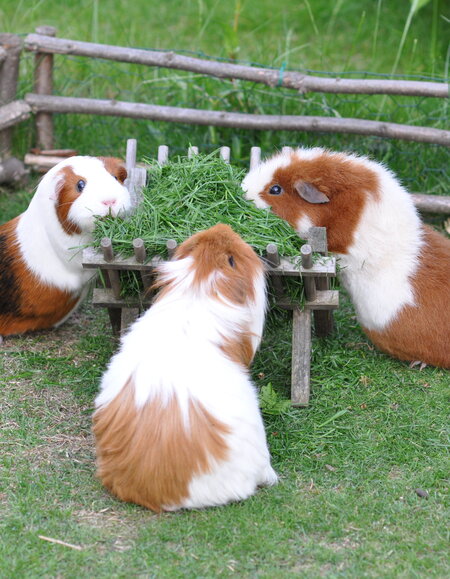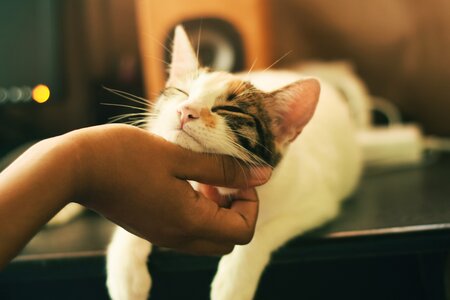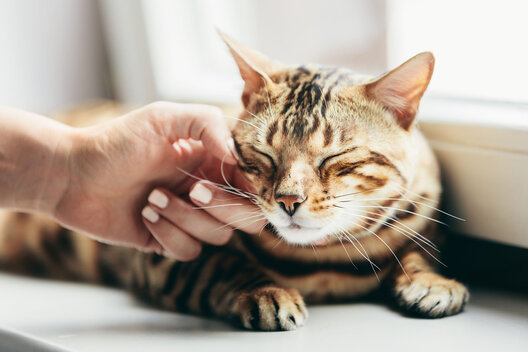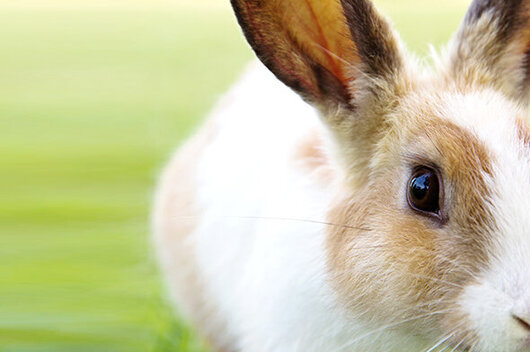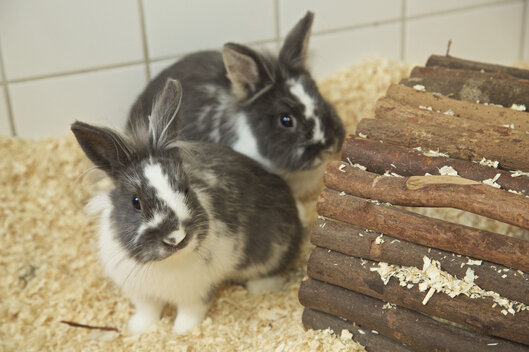Keeping guinea pigs - how to keep rodents happyWhat you should know about guinea pigs
Guinea pigs are active animals that prefer to spend their everyday lives together with several other guinea pigs. They may be small and have a friendly nature, but guinea pigs also have high expectations of their owners.
With their silky fur, beady eyes and lively nature, they quickly win our hearts: guinea pigs are among the most popular pets. However, many people underestimate the effort involved in providing these small rodents with a species-appropriate, beautiful home. But if you follow our tips for keeping them properly, your pets are guaranteed to feel at home with you.
Profile:
- Life expectancy:The average life expectancy of guinea pigs is 6-8 years.
- Origin : Guinea pigs originally come from South America, where they still live today in their natural habitat - the harsh climate of the high plateaus and bush steppes of the Andes at altitudes of up to 4,000 meters above sea level.
- Size: Adult guinea pigs have a body length of around 25 to 35 centimetres.
- Weight: Females weigh between 700 and 900 grams, males weigh between 900 and 1,200 grams.
- Gestation period: Guinea pigs are pregnant for around 68 to 72 days. Females can give birth to around four litters per year, with an average of two to three young.
- Food/nutrition : Guinea pigs need a varied diet. In addition to hay, they eat a variety of green food every day, supplemented with vegetables and a little fruit.
- Lifestyle: Guinea pigs are very sociable and should only be kept in groups. They are active alternately during the day, at dusk and sometimes at night. They also like to move around and need plenty of space.
Always keep guinea pigs with conspecifics
Guinea pigs live together in small groups in the wild. Their conspecifics are real friends for them: the animals support each other and feel less stressed when they have a familiar companion with them. Keeping them alone is out of the question - a guinea pig would suffer greatly on its own. Even in pairs, the rodents quickly get bored. If you want to adopt guinea pigs, you should therefore opt for at least three of the small animals.
Guinea pigs are only particularly sociable with their own kind. You should not keep them with other animals such as golden hamsters or rabbits .
These group constellations go well together
Ideally, your small group should consist of one neutered male guinea pig, also known as a boar, and two females or two neutered boars and four females. In any case, you should have the boars neutered so that there is no offspring. If the males are neutered before they reach sexual maturity at the age of four weeks, they can remain in their group throughout. However, if they are castrated when they are already sexually mature, they can still be fertile for up to six weeks and must remain separated from their female conspecifics until then.
Female animals are only neutered if a vet advises this for medical reasons. Keeping only female guinea pigs usually works well, but the group constellation benefits from a neutered male. Male-only groups can also get along well if all animals are neutered and there are no females nearby.
How much does a guinea pig cost?The examples are minimum costs & a rough estimate for 2 animals*

Purchase price for 2 animals

e.g. for indoor enclosures, outdoor enclosures, bowls, houses, tunnels, hammocks, hay racks etc.

for feed, hay, bedding, health checks etc.

e.g. visits to the vet, medication, castration etc.
* The costs depend, among other things, on the exact design of the enclosure, (pre-)illnesses of the animals, feeding method, etc. Additional veterinary costs cannot be calculated as a lump sum because they vary greatly from animal to animal. The estimates are based on two animals, as guinea pigs should not be kept alone.
Comfortable enclosure with plenty of space
Guinea pigs move around a lot and, as shy flight animals, need a good mix of space to run around and enough places to hide. However, standard cages for guinea pigs are usually too small for their needs and not species-appropriate. They cannot move around sufficiently. The result: their muscles atrophy. The guinea pig enclosure should therefore be as large as possible and have a floor area of at least two square meters for up to four animals. Add at least half a square meter for each additional animal.
The rodents need an environment that they can explore lively and actively. For example, a two-meter long run for them to run around in is a lot of fun. Keepers should also provide their pets with cork tubes, branches and roots to keep them occupied and plenty of hiding places. Each animal also needs a sleeping house. This should have two exits so that the animals don't get in each other's way. A run in the apartment also provides variety. However, you must first clear away sources of danger such as cables and poisonous plants.
Keeping in the garden
They can also be kept in an outdoor enclosure of at least four square meters throughout the year. It should be covered and dug into your own garden to prevent them from breaking in and out, and have a varied structure. In addition, it must not be completely exposed to the blazing sun. The enclosure should also include a spacious, weatherproof sleeping house with room for all the animals. Make sure that you provide the guinea pigs with fresh food with plenty of vitamin C, especially in winter. You can find more tips on keeping guinea pigs outdoors here.
Guinea pigs are not cuddly animals
Guinea pigs don't like noise and commotion at all. They are jumpy and sensitive. Contrary to what many people think, guinea pigs do not like to be touched or petted. If you pick up the small rodents, they will keep still but do not enjoy contact. Instead, they are terrified. So make yourself and your children aware that you can have a lot of fun with your guinea pigs by simply watching them. However, picking them up or cuddling them is not a good idea.
Nutrition: This belongs on the menu
Guinea pigs are pure herbivores and spend the whole day foraging for food in the wild. Fresh green food is the healthiest and most natural food for these small rodents. Grass, herbs, leafy greens and lettuce should make up the largest proportion of their diet, around 70 percent. Vegetables also make up around 20 percent and small amounts of fruit, around ten percent, are also part of the diet. Guinea pigs should also always have hay at their free disposal. Their teeth are constantly growing and only wear down if they chew regularly. If their teeth become too long, they hinder the animals from eating and lead to painful injuries and inflammation in the mouth. This is why raw fiber-containing food is so important.

